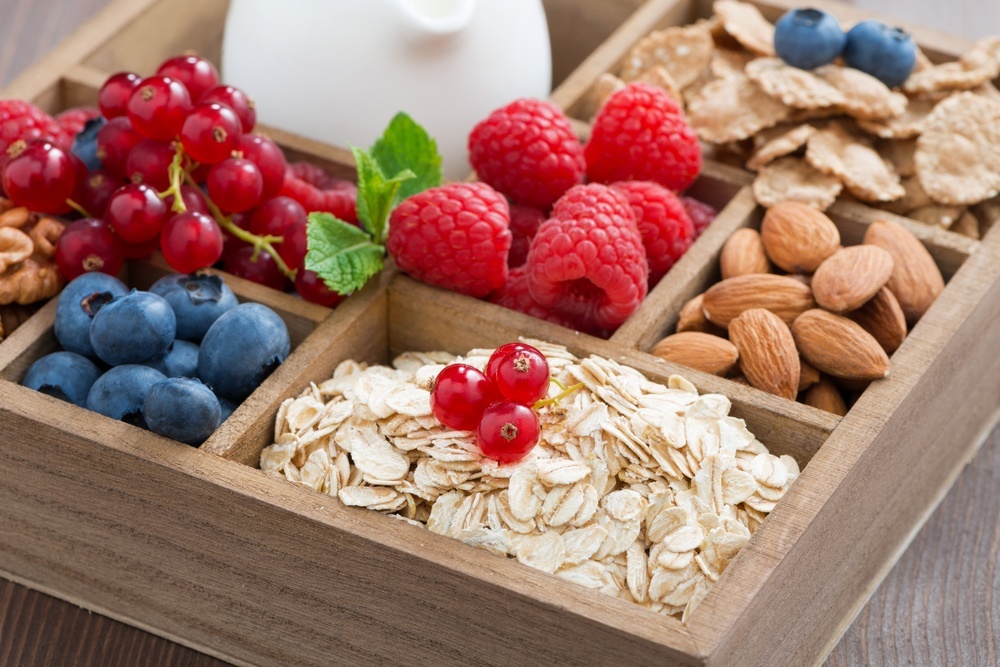Fiber is a necessary nutrient that helps our bodies feel full, regulates our bowel movements, and keeps our hearts healthy.
But most people are failing to get their fill of fiber and it can cause all sorts of health problems.
Studies have shown those who eat a high fiber diet are 40% less likely to have heart disease than those who do not eat enough fiber.
Soluble fiber, found in foods like oats and beans, help lower LDL (“bad” cholesterol) and lower blood sugar levels by slowing the absorption rate of sugar in the blood and reducing risk of type 2 diabetes.
However, more than 97% of Americans do not eat enough fiber daily, leading diseases like IBS to be on the rise. The recommended amount of fiber that should be eaten is 31 grams per day.
Here are some examples of foods to help you eat more fiber so you’re not one of the 97% lacking in fiber and walking around with a high risk for heart disease.
Eat Your Fruits
Fruits are naturally high in fiber and are easier for most people to eat than vegetables since they can be eaten on the go.
An apple has 4.4 grams of fiber and a cup of raspberries have 8 grams of fiber. If you ate both of these fruits in one day, you’d cover a third of your fiber intake and about half of your daily recommended servings of fruit.
Apples and raspberries are both high in vitamin c and raspberries contain antioxidants that help your skin look younger and builds your body’s immunity to keep you healthy.
Grains for Gains in Fiber
Grains such as whole wheat pasta, bran, and popcorn are also easy ways to eat more fiber since they are inexpensive and common foods to eat.
Popcorn is a low calorie snack and is available in unbuttered and unsalted varieties. In three cups of popcorn there are 3.6 grams of fiber. Enjoy your favorite tv show while managing to eat more fiber.
Whole wheat pasta contains 6.0 grams of fiber per cup. An easy meal of grilled chicken and pasta will give you vital fiber to keep your digestive system on track and give you added protein in a healthy way.
Fiber Filled Veggies
Complete your chicken and pasta dish with artichoke or broccoli to eat more fiber and get added nutrients such as vitamin d.
Green vegetables are generally high in fiber and will give you low calorie options to add to any meal to feel healthy and eat more fiber.
Artichokes have over 10 grams of fiber in them, equalling one third of your fiber in just one serving of vegetables! They are great steamed or boiled and are quite filling due to their size.
Broccoli is another great option to add as a side with 5 grams of fiber per cup. Mix it directly into your food like rice or on top of a baked potato. As a side it will add that little needed crisp to a dish like pasta.
Beans Pack in Fiber
Eat more fiber by adding black beans, lima beans, or baked beans to any meal or salad.
Each of those beans contain at least 10 grams of fiber, with black beans topping the list at 15 grams per cup. They also have high amounts of iron, potassium, and protein.
Though they are low in fat, they are high in calories, so try not to go overboard with how many you add to a meal.
Split peas are loaded with fiber at 16.3 grams of fiber per cup. Split peas make a nice, healthy homemade soup or hummus.
Eating more fiber is the best natural way to maintain a healthy digestive system. Fiber is also useful in lowering cholesterol and blood sugar levels, lessening the risk of heart disease.
If you eat the recommended amount of fiber each day but still have digestive problems, talk to your doctor about other possible solutions to help regulate your body.
References
http://www.mayoclinic.org/healthy-lifestyle/nutrition-and-healthy-eating/in-depth/fiber/art-20043983
http://www.drcarney.com/blog/entry/97-of-people-are-deficient-in-this-nutrient

